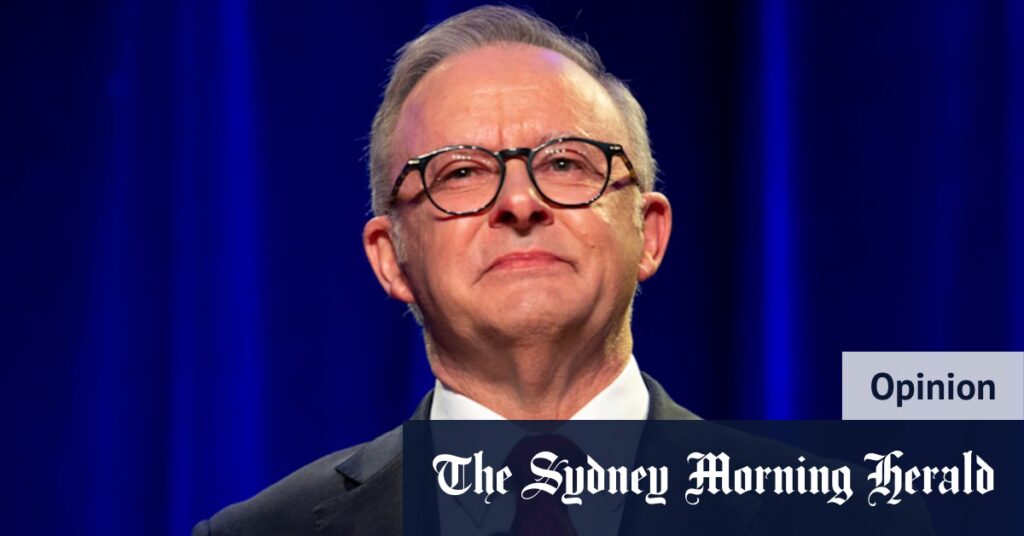Menzies was shaped by the progressive liberal environment of Federation-era Victoria. He was ultimately inspired by the 19th century English liberal tradition, best represented by our second prime minister, Alfred Deakin – generally considered the father of Australian liberalism. Menzies’ choice of name for the party he created reflected his own political creed. He deliberately ruled out calling it “Conservative” because he viewed Australia’s future as a contest between socialism and liberalism.
Loading
Fraser, although initially the leadership candidate of the party’s right wing, was also a classical liberal – as he made perfectly clear in the most important statement of his political values, the 1971 Deakin Lecture. Those values shone through his prime ministership. His foreign policy was defined by his loathing of racism; he led the world in the measures that ended the apartheid regime in South Africa.
Domestically, he introduced many significant liberalising measures. Whitlam may have announced the policy of multiculturalism, but it was Fraser – closely guided by his young adviser Petro Georgiou – who created the architecture of the successful multicultural nation we are today.
John Howard was the first Liberal leader actually to describe himself as a conservative. But, with his deep understanding of the party’s history and lore, he respected its liberal antecedents. He invented the shrewd description of the Liberal Party as “a broad church”, embracing both the liberal and conservative traditions. In Howard’s ministries, both were well represented.
Of the others, Holt and Gorton continued the Menzian tradition; Turnbull was unambiguously a liberal; while Morrison, though hard to pin down philosophically, maintained Howard’s “broad church” approach.
Tony Abbott – happy to be considered the party’s most conservative prime minister – also accepted it. In his 2009 manifesto Battlelines, he wrote: “[T]he party is instinctively conservative as well as liberal … As John Howard has frequently observed [it] is the political custodian of both the liberal and the conservative traditions.”
So – 13 election victories by Liberal PMs who defined themselves as classical liberals: Menzies, Holt, Gorton, Fraser and Turnbull. Six by PMs from the conservative wing, who saw the party as a “broad church”, a balanced coalition of conservative and liberal elements. And victories by leaders who disregarded the party’s liberal tradition? None.
In 2002, the British Conservative Party was in the same position in the political cycle as the Liberal Party is now. Having lost office in 1997, it was beaten again. The Tories had run an ugly, rebarbative election campaign, characterised by plenty of anti-immigrant dog-whistling, attacks on the Whitehall civil service and other familiar populist tropes. Theresa May – a future prime minister and one of the most decent people I ever came to know in politics – was installed as the new party chairman. May’s speech to the party conference was a bracingly candid wake-up call:
David Cameron and Theresa May revitalised the British Conservative Party.Credit: PA
“[T]he Conservative Party, its principles, its people, have been let down in recent years by the failure of some people to represent [us] at our best. … Our base is too narrow and so, occasionally, are our sympathies. You know what people call us: ‘the nasty party’ … I want us to be the party that represents the whole of Britain … but the truth is that as our country has become more diverse, our party has remained the same … [W]hen the Conservative Party is willing to change, the Conservative Party is ready to win.”
It took a while for the Tories to detoxify their brand, but gradually they did. In 2005, they elected a modernising new leader, David Cameron. A liberal Tory somewhat resembling Malcolm Turnbull, Cameron led them back to government in 2010. They won four elections in a row, and were in office for 14 years – the second-longest British government since the war.
The Tories learnt the lessons of their defeat. The Liberal Party must do that too. It can be an election-winning machine again. But not until it rediscovers its election-winning formula.
George Brandis is a former high commissioner to the UK and a former Liberal senator and federal attorney-general. He is a professor at ANU.
Read the full article here
